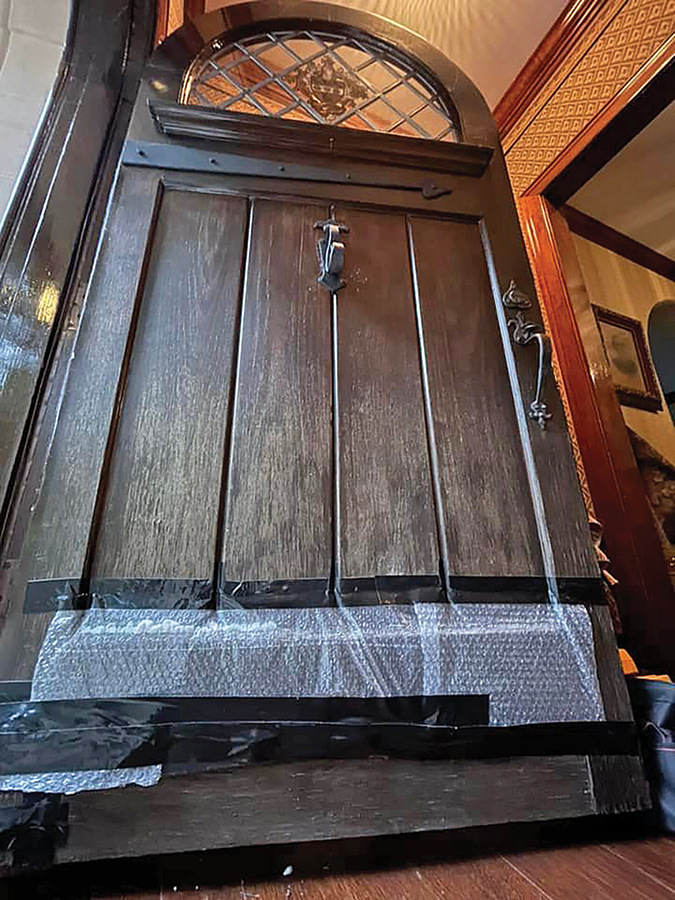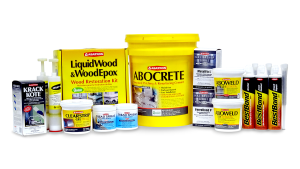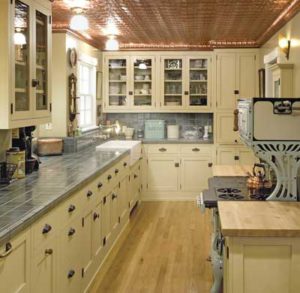When we first visited the house, four years ago, we noticed signs of damage to the front door. Surrounded by stone quoins, the door has a fixed, leaded-glass window that depicts a hand-painted crest of the family who built it, in the mid-1920s. The door is faced in oak on the exterior with massive decorative strap hinges and coordinating entry hardware. Inside, the door is paneled in walnut.

The bottom rail was suspect. Even from a distance, you could see that the door had previously been repaired, and not well. The extent of the damage was not immediately obvious, though. We moved in and put the repair on our to-do list.
Other projects took precedence (including a flood in the basement that necessitated an extensive drainage overhaul), so we didn’t get to the door right away. This is our main entrance, used daily, so it wasn’t long before we noticed that the varnish was delaminating and peeling along the lower third of the door, a sign of water intrusion.
The half-round copper gutter above the door was not well adjusted and not snugged to the slate. Rainwater had been running between the roof and the gutter, creating a thin wall of water that hit the limestone door sill below. The water bounced up onto the door, then percolated into the wood where the varnish was peeling away. The old, dry end-grain of the vertical panels above the bottom rail were soaking up water, too, creating significant, almost hidden wood rot.
We began by fixing the gutter, to eliminate water leakage. Then we removed the strap hinge from the lower part of the door and sent the bottom rail to a local wood shop recommended to us by a contractor familiar with the house. The bottom rail was too far gone to save, and our carpenter, Ricardo Martinez, also proposed replacing the four vertical inset panels, which were similarly damaged.



Martinez and his team carefully matched the wood on both sides of the door using the same species and similar grain: oak on the exterior, walnut veneer on the interior. To add strength and structural stability, the oak and walnut facings were sandwiched together over a dimensionally stable core, similar to the ones used in modern, high-end door construction.

After the repairs were made, Ricardo and his helpers carefully test-hung the door to make sure it fit properly. Then they finish-sanded and stained the wood to match the existing stain on the older parts of the door.

Now, it’s almost impossible to tell that the door was ever endangered. A custom-built, protective storm door is on the way, too—ensuring that the restored door will be protected for years to come.

Resources
Martinez Carpentry and Masonry, Winston-Salem, NC
(336) 362-4563
Arched doors (new):
Vintage Doors
vintagedoors.com
Arch- & round-top panel doors, with mouldings & glazing, in many configurations incl. Double, Gothic, with sidelights, in 12 wood species







